
Indigenous peoples can be found on every continent, flourishing in a multiplicity of cultures and languages. Their number is estimated at 350 million, divided into 5,000 peoples. In Canada, the Indigenous population includes more than 1,8 million members divided into three groups: First Nations, Métis and Inuit. In Quebec, more than 205,000 people identify as Indigenous.
Indigenous studies explore the many historical and contemporary dimensions of indigenousness and indigenous peoples around the world. An interdisciplinary field, Indigenous studies draws on the corpus of several disciplines, including anthropology, law, education, history, art history, visual arts, film studies, literature, health sciences, sociology and feminist studies.
Indigenous studies cannot be approached in a vacuum. In addition to journals devoted entirely to the subject, scholarly and cultural magazines from all disciplines publish texts and dedicate thematic issues to the field. Continuing our exploration of the Érudit corpus in connection with National Indigenous History Month, we offer an overview of recent texts published in these journals.
Scholarly articles at a glance
Changing the Story: Indigenous Youth Belong in Post-Secondary Education
First Rider, Wanda, et al. “Changing the Story: Indigenous Youth Belong in Post-Secondary Education.” Alberta Journal of Educational Research, volume 70, number 1, spring 2024, p. 83–97.

Abstract: This article describes a collaboration between an urban school board and a faculty of education aimed at supporting Indigenous youth transitions to post-secondary education. Drawing upon strengths-based approaches including wise practices, we offer a model for how postsecondary transition events can illuminate pathways for young people to see that they belong in higher education.
L’alimentation des peuples autochtones au Canada : Entre outil et cible de politiques coloniales
Hamel-Charest, Laurence. “L’alimentation des peuples autochtones au Canada : entre outil et cible de politiques coloniales.” Anthropologie et Sociétés, volume 47, number 3, 2023, p. 87–108.
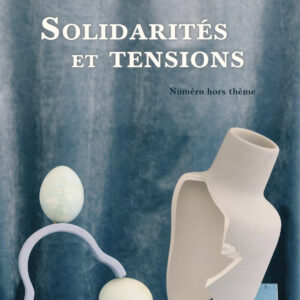
Abstract: As in other colonial contexts, Canadian authorities have instrumentalized food in their relations with Indigenous peoples. Concretely, how has food colonialism been orchestrated in Canada? While the literature makes it possible to grasp certain components, the experience of the First Nations in Quebec is never examined.
Listening to the Fur Trade: Soundways and Music in the British North American Fur Trade, 1760-1840 by Daniel Laxer
Jollineau, Matthew. “Listening to the Fur Trade: Soundways and Music in the British North American Fur Trade, 1760-1840 by Daniel Laxer.” Ontario History, volume 116, number 1, spring 2024, p. 119–121.
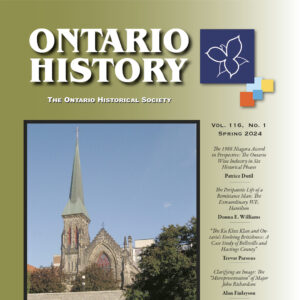
For Ontario History magazine, historical interpreter Matthew Jolineau reviews Research Coordinator at the Ministry of Aboriginal Affairs Daniel Laxer’s Listening to the Fur Trade: Soundways and Music in the British North American Fur Trade, 1760-1840. This intelligent, synthetic text explores the influence of music and sound on relations between European traders and the Indigenous peoples with whom they came into contact.
Scoping review of current challenges and circumstances impacting Indigenous applications to Canadian medical schools
Kliska, Elizabeth, et al. “Scoping review of current challenges and circumstances impacting Indigenous applications to Canadian medical schools.” Canadian Medical Education Journal / Revue canadienne de l’éducation médicale, volume 15, number 2, 2024, p. 65–77.
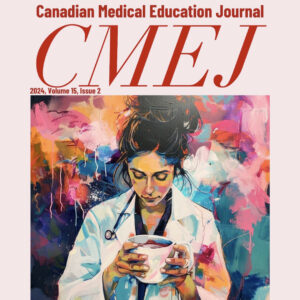
Abstract: Considering the relevant 2015 Truth and Reconciliation Commission recommendations, this paper reviews the current state of Canadian medical schools’ Indigenous admissions processes and explores continued barriers faced by Indigenous applicants.
Leçons de critique de traductions : une expérience pédagogique en littérature comparée avec Markoosie Patsauq
Lemieux, René. “Leçons de critique de traductions : une expérience pédagogique en littérature comparée avec Markoosie Patsauq.” Les Cahiers Anne Hébert, number 19, 2024, p. 11–43.
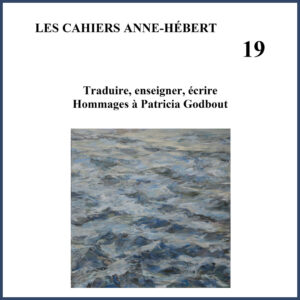
Abstract: This article first presents a pedagogical initiative created for translation students, a translation criticism workshop in which multiple translated versions of a literary work are presented to help students understand the choices made in translation. The article goes on to present a specific case, the translation of Markoosie Patsauq’s work, examined with a group of students in the form of ‘lessons’ learned during the workshop.
L’effacement des Autochtones et du colonialisme de l’école des colons : analyse de la définition du personnel enseignant non autochtone au Québec des rapports entre Autochtones et non-Autochtones
St-Pierre, Xavier et Sivane Hirsch. “L’effacement des Autochtones et du colonialisme de l’école des colons : analyse de la définition du personnel enseignant non autochtone au Québec des rapports entre Autochtones et non-Autochtones.” Canadian Journal of Education / Revue canadienne de l’éducation, volume 47, number 1, spring 2024, p. 216–243.

Abstract: In this article, I focus on the social relations related to settler colonialism (Coulthard, 2018; Wolfe, 2006) in a non-Indigenous school context. The objective pursued in this article is to analyze how the logic of erasure of settler colonialism (Veracini, 2011) manifests itself in the “settler school”.
Exploring cultural articles in Indigenous studies
Jeff Barnaby: L’horreur de la critique sociale par le prisme autochtone
Caron, Dominique. “Jeff Barnaby : l’horreur de la critique sociale par le prisme autochtone.” Séquences : la revue de cinéma, number 333, winter 2023, p. 53–53.
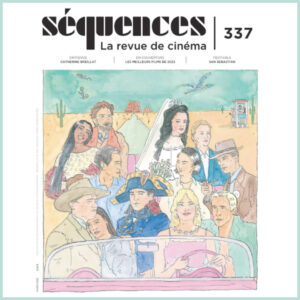
Introduction: Mi’kmaq filmmaker Jeff Barnaby passed away last October. He was just 46 years old. His death brought to an abrupt end the burgeoning career of a versatile filmmaker who left his mark on Quebec and Canadian cinema. Although he never claimed to be part of the Indigenous futurisms movement, Barnaby’s works defy the stereotypes associated with First Nations people by offering a unique narrative perspective on genre cinema, particularly horror and science fiction.
In Our Hands: Native Photography, 1890 to Now
Dorenbaum, Frances. “In Our Hands: Native Photography, 1890 to Now.” Esse arts + opinions, number 111, spring–summer 2024, p. 100–101.
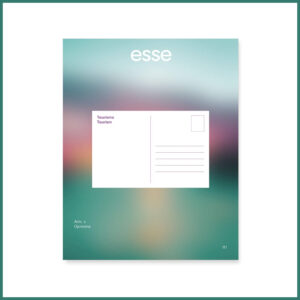
Introduction: As social and political polarities continue to widen, it is as urgent as ever to devote space to holding multiplicity […] What might it look like, then, in an exhibition, to understand decolonization not as a buzzword or means to further division but as a coming together, a sharing of space and leadership, and a dedication to looking in different directions and building out a multi-perspectival history of existence?
Shelley Niro, 500 Year Itch. National Museum of the American Indian, New York (27.05.2023 — 1.01.2024)
Guignard, Sophie. “Shelley Niro, 500 Year Itch. National Museum of the American Indian, New York (27.05.2023 — 1.01.2024) / 500 Year Itch.”Ciel variable, number 125, winter 2024, p. 75–77.
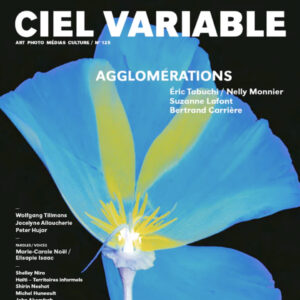
Abstract: The exhibition Shelley Niro: 500 Year Itch is the first major retrospective for Shelley Niro, a multidisciplinary Mohawk artist from the Bay of Quinte Kanyen’kehá:ka Nation and member of the Six Nations of the Grand River, Turtle Clan […] Curators David Penney, Melissa Bennett, and Greg Hill combined forces to pay tribute to a towering artist in the contemporary Indigenous scene.
Indigenous Voices and white pedagogy
Hanna, Maeve. “Indigenous Voices and white pedagogy / Voix indigènes et pédagogie des Blancs.” Esse arts + opinions, number 85, fall 2015, p. 58–65.

Abstract : I have just described the opening event for Nekeyoh/Our Home, an exhibition of work by Lheidli T’enneh First Nation artists at Two Rivers Gallery, located in Lheidli T’enneh traditional territory […] I curated the exhibition, and I am a white settler curator. As I planned this exhibition, I began to think critically about how I could ethically curate an exhibition of work by First Nations artists.
Ce n’est pas la fin du monde : l’art autochtone, la technologie et l’intelligence artificielle
Lafontaine, Dominic. “Ce n’est pas la fin du monde : l’art autochtone, la technologie et l’intelligence artificielle.” Vie des arts, volume 68, number 273, winter 2024, p. 88–91.

Abstract: AI has arrived! AI has arrived! It’s the end of Art! These statements would appear to be true if we were to believe the articles recently published on creation assisted by artificial intelligence (AI). Art generated by technology remains a victim of the clichés conveyed by the dystopian science fiction films of the 1970s and 1980s. But will ChatGPT really end up as the Terminator?
Réinventer les savoirs culinaires
Picard Yokwas Yänenda’yeh, Véronik. “Réinventer les savoirs culinaires.” Liberté, number 343, summer 2024, p. 53–55.

Abstract: Food is a daily necessity that transcends cultural and social barriers. Yet our cuisines are often influenced by exotic flavors, and sometimes the link that binds us to the indigenous ingredients of our own land weakens. The quest by some to rediscover Quebec’s culinary treasures, nestled in the boreal forest or on the tundra, becomes all the more crucial in an era of rising food insecurity and global food systems under strain.
We also encourage you to consult our publication showcasing all the scholarly journals dedicated to indigenous studies hosted on Érudit, as wells as our interview with the Revue d’études autochtones editing team.